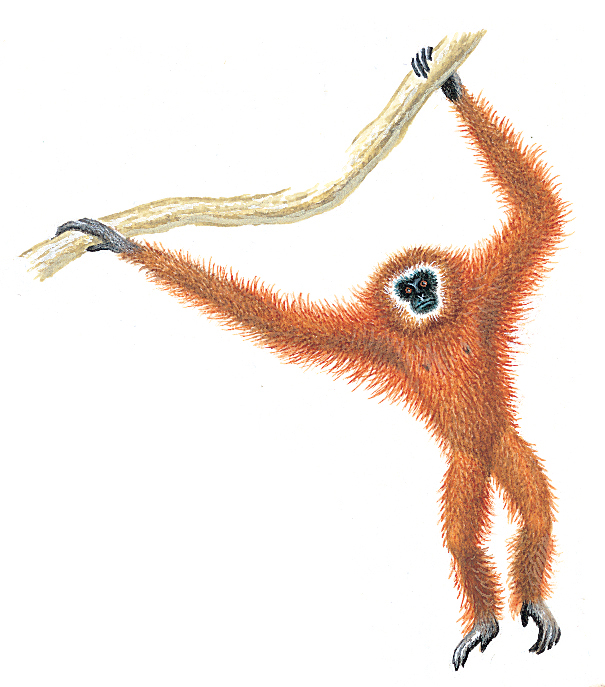Gibbon is the smallest of the apes. Scientists classify the several species (kinds) of gibbons in the lesser ape family. All other ape species—the bonobo, chimpanzee, gorilla, and orangutan—make up the great ape family. Gibbons live over a wider range than do the great apes. They inhabit forests in the Indian state of Assam, as well as in Indonesia, Malaysia, Myanmar, Thailand, and elsewhere in Southeast Asia. All species have long arms and legs but no tail. Most weigh from 10 to 20 pounds (5 to 9 kilograms) and stand 15 to 36 inches (38 to 91 centimeters) high. Adults typically range from black to light tan, with males often darker in color than females.

Gibbons live in the tops of trees and rarely come to the ground. They eat fruits and leaves. Gibbons use their arms to swing from branch to branch. They also walk on tree branches using only their legs. This way of walking resembles the way human beings walk on the ground. Gibbons live in family groups that usually consist of a male, a female, and one or two of their young. A gibbon family claims an area called a territory and uses loud calls and songs to warn other families to stay away.
Loading the player...White-handed gibbons
The white-handed gibbon ranks among the best-known species. It gets its name from the white fur on its hands and feet, which contrasts with the darker fur on the rest of its arms and legs. Another species, the black-crested gibbon, has a crestlike tuft of hair on top of its head. The rare hoolock gibbon is the only type that lives as far west as India. The siamang ranks as the largest gibbon species. It measures about 36 inches (91 centimeters) tall and weighs about 26 pounds (12 kilograms). Siamangs have inflatable throat pouches that enable them to make particularly loud calls and songs.

All gibbons have become threatened in the wild. Human beings have greatly reduced gibbon populations by destroying the animals’ forest homes and by capturing young animals for food or for sale as pets. The most endangered species include Kloss’s gibbon and the pileated gibbon. (See also Deforestation; Habitat loss.)
